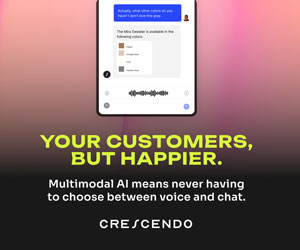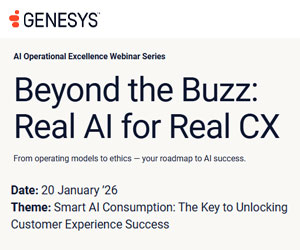Zach Morrison at Alvaria explores how to improve both the customer experience and the bottom line with self service.
I have a favorite cashier. Her name is Rosemary and she’s one of the more senior checkout associates at my local grocery store. She’s funny, snarky, efficient, subtle, smart, expressive, and playful.
She gives me a hilariously disapproving look every time I try to use a $2 off coupon for dog food; and if I forget the coupon, she’ll give me the $2 off anyway. More often than not, I’ll choose to go in person to the grocery store rather than order online.
I’ll go out of my way to go to that particular supermarket. I’ll also go out of my way to see if she’s working. I’ll even stand in a longer line or choose to do a little extra shopping when I see her line is full. My customer experience informs pretty much every other touchpoint with that grocery store.
At some point, (time and cost) efficiency gives way to experience. Whether that’s before, during, or after the transaction is irrelevant. If the result is going to be more memorable, fun and engaging, we’re willing to spend a little more time and money.
But there’s another feature that I love about this supermarket. Not only does it boast the crown jewel of cashiers on its roster, but it also is one of the few local supermarkets that has multiple self-service checkout options. Even on the weekends, you rarely wait more than 5 minutes for a DIY scan-it-and-bag-it station to open.
In other words, the CX isn’t one sided – there’s actually a CX continuum. The same end user who values the personalized and tailored agent experience also understands the value of an efficient get-in-get-out run to the store. Successful organizations have begun to realize that the real CX is exactly where the humanity and technical issues overlap.
If you remember, the call centre industry (and most businesses) thought that AI (robots) would completely replace existing systems and agents. As technology gives way to new strategies, most companies have discovered that automation has its place but suffers greatly from a few major quirks.
It’s become very clear that the goal isn’t to replace the IVR or the human element completely, but to have an integrated, omnichannel strategy to give you the best of all possible worlds to deal with a variety of customer needs and preferences.
What we do know for sure is that maintaining context is part of an omnichannel customer service strategy and helps personalize self-service, streamline interactions, reduce handle times and improve the entire customer experience.
For most organizations, once you begin to think about the customer experience strategy, chances are that you’ve already ironed out any issues with proof-of-concept, production, pricing and legalities. Tailoring the customer experience based on profile is an optimal and proven way to improve CX. It’s also very scalable.
You can delight your customers and reduce costs with modern self-service capabilities that adapt to customer preferences and make highly efficient use of agent time. It’s no surprise then, that the customer experience is poised to fully overtake price and product as the key brand differentiator as we move into the next era of CX.
This blog post has been re-published by kind permission of Alvaria – View the Original Article
For more information about Alvaria - visit the Alvaria Website
Call Centre Helper is not responsible for the content of these guest blog posts. The opinions expressed in this article are those of the author, and do not necessarily reflect those of Call Centre Helper.
Author: Alvaria
Published On: 2nd Nov 2021
Read more about - Guest Blogs, Alvaria






 Alvaria was founded through the merger of Aspect Software and Noble Systems, technology leaders in Customer Experience (CX) and Workforce Engagement solutions
Alvaria was founded through the merger of Aspect Software and Noble Systems, technology leaders in Customer Experience (CX) and Workforce Engagement solutions 






























